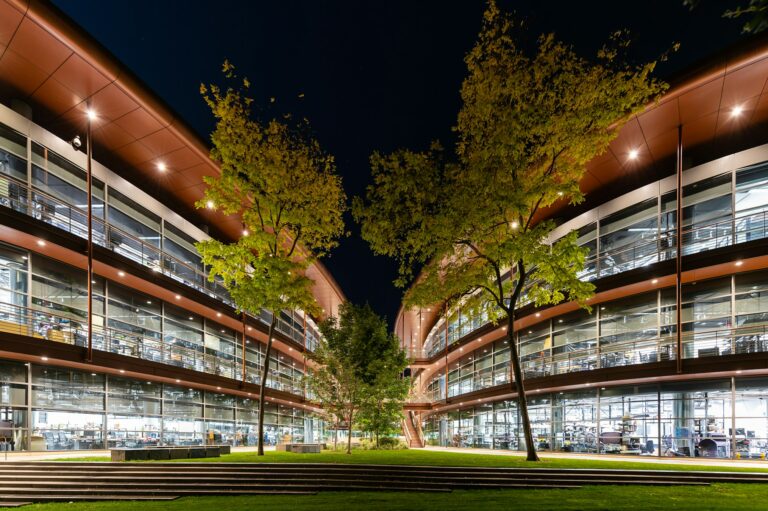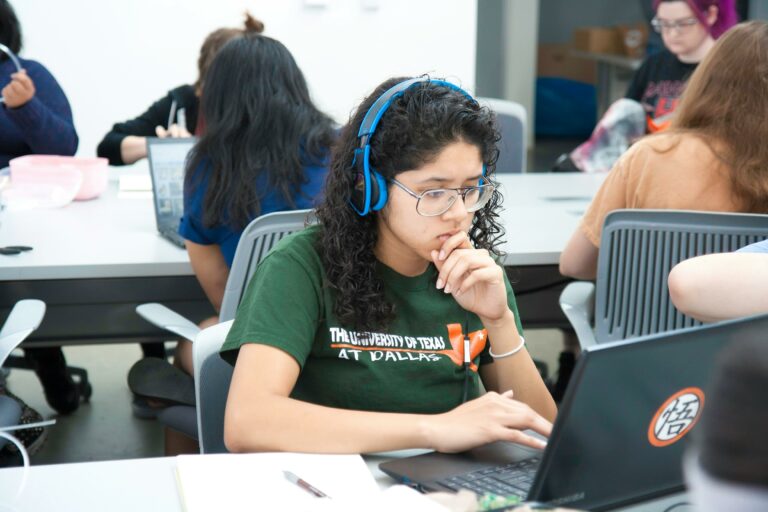
Over a recent weekend, I virtually strapped myself into an X-Wing in the Star Wars ‘Squadrons’ game. I’m not really a gamer but 43 years after I snuck out of school early (sorry Mr Cooper) to watch the film, the chance to sit in a Starfighter was too good to miss.
It was glorious, and I was misty eyed with nostalgia as I was pathetically shot out of the sky over and over by those pesky Tie Fighters. It really resonated with what I know about the power of immersion. As a 15-year-old in 1977 I was completely immersed by Star Wars’ opening shot and powerful music. Immersion isn’t just good film making, writing, music or art. Immersion opens a portal into the mind. And it lasts. Now what if that immersion carried learning, reason, curiosity and the chance to create and communicate?
In March of this year as the world changed around us, I was inundated with calls and emails. Amidst the appalling backdrop of the pandemic, my time had come. Or more accurately, the time for immersive technology. By immersive, many people assume we are talking about virtual reality (VR) and indeed, most of those people who contacted me early on were referring to this. Virtual has become synonymous with immersive and looks like a no-brainer for teachers and learners as they experience a disconnect from the norm. I see the ever-shifting time quite differently.
It’s often the case that a technology is first adopted for the practical help it can give. Smartphones are allegedly for making phone calls… Like most technology-based approaches, immersion is actually a combination of platforms, software and techniques. Yes, as was pointed out to me repeatedly, VR will allow a number of people to gather together virtually but the level of effort and access to and cost of technology is a barrier. And have you heard of Zoom? So why bother? (Actually, VR meetings are fantastic.)

The transfer of knowledge is at the core of a teacher’s function, but the mediation of knowledge and learning is its real heart. A teacher doesn’t just know a subject, facts or skills. The real craft of teaching is how to impart knowledge, opening a portal to the learner’s mind to prepare the ground. Very often a teacher has to find just the right way to step inside the brain and leave behind a bundle of understanding. There is no “one size fits all” and teachers will subtly shift and adapt to find individual routes to individual minds. Even more important in my opinion is the return journey of that knowledge and skillset. How a learner can then utilise and create with it is fundamental to life chances and can spark a lifelong love of learning.
I often refer to a learner’s mind as a green screen studio. It’s an always-on, ready-made place where we all have the ability to construct vast virtual film sets full of characters and amazing locations, springing to life as we absorb words leaping off the pages of a book. Whatever we consume, this immersion is available to us and when done in the right way, the impact is huge. The content that changes our lives on first contact (a first favourite book, film or piece of music) is why immersion is the key to amplifying learning. It generates an emotional, sometimes visceral, response. If we can replicate those conditions and exploit the opportunity that briefly exists, we can make learning quicker, deeper and longer lasting. In other words, immersion is a learning amplifier.
When developing immersive experiences using technologies such as augmented and virtual reality, we have to keep these principles in mind. Our first step is to look at areas that will benefit from it. Making immersive content isn’t cheap and we have to be mindful that the effort required to use it in the classroom or home has to be worth the effort. In other words, if a concept or knowledge can be easily delivered well via existing content, then we should probably look elsewhere.
However, if a concept has nuances and can be a struggle to convey, immersive can transform the learning experience. We look at the potential to emotionally connect, creating opportunities to elicit awe, wonder, surprise and joy. In VR, this means taking students to times and places they couldn’t possibly see without our virtual time machine and using those journeys to spawn the most amazing creative output. I’ve seen pupils and teachers accelerate through topics, desperate to convey what they now understand (because in some small but significant way, they’ve actually been there) in writing, filming, artwork or even performance. The experience really sticks with them and in many cases, they want to know more about the subject that sparked it.
In AR, especially with new ground-tracking AR – the kind that finds a surface and doesn’t need a trigger image – not only can we present objects, people and animals from any time or place, but we can fundamentally alter their surroundings, even change their faces and appearance. As one teacher said to me years ago as I demonstrated this in those early days of AR (as she looked under the iPad to see if what she was seeing on the screen was actually there): “This makes me want to teach”.
If we really understand the psychology of immersion and the dovetailing with education philosophy, psychology and appropriate pedagogies, then it is a powerful force. It needs to be targeted at the right subjects, topics and concepts. I am wary of seeing the same old immersive experiences being brought to teachers, like dissecting organs or periodic tables. They can look impressive, but to make a mark, we need to understand the fundamentals of immersion. We’re not creating 3D clipart, we’re unleashing our inner film director, reaching out to the green screen in the mind with ‘lights, camera, action!’

Phil Birchinall
Phil Birchinall is Senior Director of Immersive Content at Discovery Education, the global leader in curriculum-aligned digital resources and professional learning for primary and secondary schools. Visit www.discoveryeducation.co.uk.



